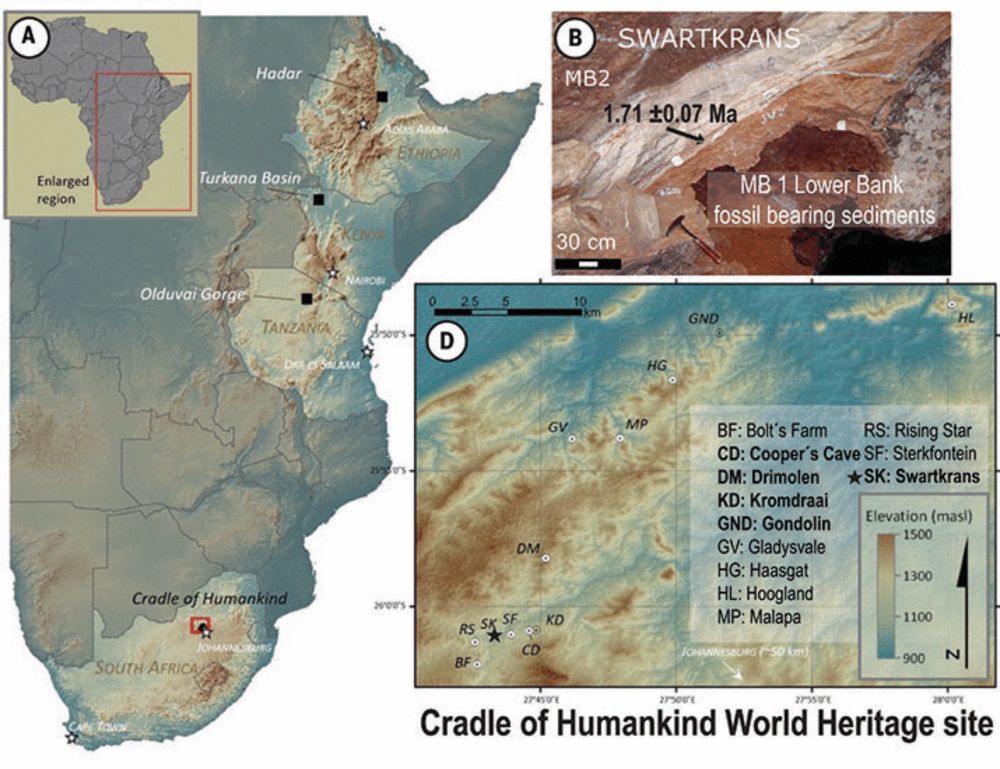@nareng.bsky.social
Reposted
Hello hello, @nareng.bsky.social et al. has a new paper on adaptive radiation of fossils of Lake Victoria’s haplochromine cichlid fish.
Cool findings on diversification, how generalist results in specialist and how generalist persist in time!
Please have read
www.nature.com/articles/s41...
Cool findings on diversification, how generalist results in specialist and how generalist persist in time!
Please have read
www.nature.com/articles/s41...

Fossil evidence for trait diversification in an adaptive radiation - Scientific Reports
Adaptive radiation is an important process for the origin of functional and ecological biodiversity. Understanding how, when, and why adaptive radiations occur is a long-standing interest in evolution...
www.nature.com
November 6, 2025 at 1:33 PM
Hello hello, @nareng.bsky.social et al. has a new paper on adaptive radiation of fossils of Lake Victoria’s haplochromine cichlid fish.
Cool findings on diversification, how generalist results in specialist and how generalist persist in time!
Please have read
www.nature.com/articles/s41...
Cool findings on diversification, how generalist results in specialist and how generalist persist in time!
Please have read
www.nature.com/articles/s41...
Using fish teeth fossils from lake sediments, we found the haplochromine cichlids diversified quite rapidly and the entire food web evolved within just the first three millennia after the formation of modern Lake Victoria (which started refilling ~ 17k years ago). www.nature.com/articles/s41...

Fossil evidence for trait diversification in an adaptive radiation - Scientific Reports
Adaptive radiation is an important process for the origin of functional and ecological biodiversity. Understanding how, when, and why adaptive radiations occur is a long-standing interest in evolution...
www.nature.com
November 6, 2025 at 8:05 AM
Using fish teeth fossils from lake sediments, we found the haplochromine cichlids diversified quite rapidly and the entire food web evolved within just the first three millennia after the formation of modern Lake Victoria (which started refilling ~ 17k years ago). www.nature.com/articles/s41...
Reposted
Fossil evidence for trait diversification in an adaptive radiation
->Nature | More from Lil Dr Glen EcoChat at BigEarthData.ai
->Nature | More from Lil Dr Glen EcoChat at BigEarthData.ai

Fossil evidence for trait diversification in an adaptive radiation
The sediment cores were collected in 2018 from four sites; LVC18-S1 (located at 01°06,914’ S, 33°55,146’ E), LVC18-S2 (located at 01°07,850’ S, 33°56,780’ E), LVC18-S3 (located at 01°06,914’ S, 33°55,146’ E) and LVC18-S4 (located at 01°02,966’ S, 33°47,768’ E) in...
www.nature.com
November 5, 2025 at 11:19 PM
Reposted
Hello,
Our paper on enamel proteins from Paranthropus robustus has finally been peer reviewed, please have a read here: www.science.org/doi/10.1126/...
Paranthropus robustus has been puzzling scientists since its discovery in 1938 in South Africa, where a high number of fossils have been found.
Our paper on enamel proteins from Paranthropus robustus has finally been peer reviewed, please have a read here: www.science.org/doi/10.1126/...
Paranthropus robustus has been puzzling scientists since its discovery in 1938 in South Africa, where a high number of fossils have been found.

Enamel proteins reveal biological sex and genetic variability in southern African Paranthropus
Paranthropus robustus is a morphologically well-documented Early Pleistocene hominin species from southern Africa with no genetic evidence reported so far. In this work, we describe the mass spectrome...
doi.org
May 29, 2025 at 6:52 PM
Hello,
Our paper on enamel proteins from Paranthropus robustus has finally been peer reviewed, please have a read here: www.science.org/doi/10.1126/...
Paranthropus robustus has been puzzling scientists since its discovery in 1938 in South Africa, where a high number of fossils have been found.
Our paper on enamel proteins from Paranthropus robustus has finally been peer reviewed, please have a read here: www.science.org/doi/10.1126/...
Paranthropus robustus has been puzzling scientists since its discovery in 1938 in South Africa, where a high number of fossils have been found.
Reposted
My home girl Dr Nare Ngoepe has a news and reviews article in Nature!
It's all about why some species are more likely to diversify than others!!!
it's a short informative read!
www.nature.com/articles/d41...
It's all about why some species are more likely to diversify than others!!!
it's a short informative read!
www.nature.com/articles/d41...

Evolutionary flexibility to gain or lose tooth complexity sparks fish diversification
Evolutionary insights about how ray-finned fishes diversified.
www.nature.com
February 27, 2025 at 7:47 AM
My home girl Dr Nare Ngoepe has a news and reviews article in Nature!
It's all about why some species are more likely to diversify than others!!!
it's a short informative read!
www.nature.com/articles/d41...
It's all about why some species are more likely to diversify than others!!!
it's a short informative read!
www.nature.com/articles/d41...

